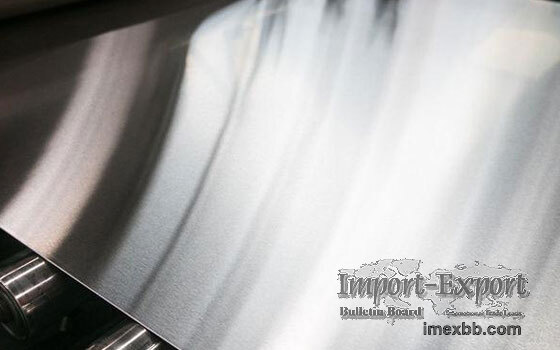 |
 |
Home > Offers to Sell > Minerals & Metals > Iron & Steel > Stainless Steel
| Contact: | Ciffe |
|---|---|
| Company: | Shandong Zhishang Steel Co., Ltd |
| https://www.zhishanginternational.com | |
| Jinan 250000 | |
| China | |
| Phone: | +8613964085002 |
| E-Mail: | |
| Date/Time: | 9/7/23 9:54 GMT |
Stainless steel performance in all aspects
1. Reduced corrosion resistance due to damage or contamination.
Corrosion may occur where the film has been damaged, and other forms of
contamination are present that prevent the natural re-formation of the
passivated film. All the beneficial properties of stainless steel can be
destroyed during processing, such as heat treatment or machining, such as
welding, cutting, sawing, drilling and bending. As a result of these
treatments, the oxide protective film on the stainless steel surface is usually
damaged or contaminated, making it impossible to achieve spontaneous and
complete passivation. As a result, localized corrosion may occur, even under
conditions where corrosion is relatively weak. When used, it can result in an
unsatisfactory end product, or even worse, the failure of critical systems.
A: Welding causes accelerated oxidation on the inside, outside and near the
weld. Oxidation is visible because there are areas of discoloration, and the
color is related to the thickness of the oxide layer. Compared with the oxide
layer on the stainless steel before welding, the oxide layer in the discolored
zone is relatively thick, and the composition changes (containing less
chromium), which reduces the local corrosion resistance. For the inside of the
tube, oxidation and discoloration can be minimized by using proper backwashing
methods. After welding, post-welding treatments such as pickling and grinding
are usually required to remove oxides (color) and restore corrosion resistance.
Color charts are often used to determine whether a weld needs pickling based on
color grade. However, this decision is subjective, and in principle each color
indicates the presence of oxidation and the affected oxide layer, thus reducing
corrosion resistance.
B: Mechanical treatment usually uses mechanical or non-mechanical contaminated
surfaces. Organic pollutants can be caused by lubricating oil. Contact with
tools can lead to inorganic contaminants such as foreign iron particles. Plaque
is often caused by surface contamination of all kinds. In addition, foreign
iron particles may cause galvanic corrosion. Pitting and galvanic corrosion are
local forms of corrosion that initially require water treatment. Therefore,
surface contamination usually reduces the corrosion resistance of stainless
steel.
2. Surface treatment.
In order to prepare the surface, remove discoloration and restore corrosion
resistance, there are many post-treatments and methods. Here again we should
distinguish between chemical and mechanical methods. Chemical methods are:
pickling (soaking, with pickling paste or pickling spray), auxiliary
passivation (after pickling) and electrolytic polishing. Mechanical methods
are: sandblasting, glass or ceramic pellet shot blasting, painting, polishing.
While all methods produce welded joints, no mechanical post-treatment will
provide corrosion properties suitable for harsh applications. Use chemical
methods to remove oxides and other contaminants from surfaces, while using
mechanical methods to potentially remove contaminants from previously removed,
polished, or erased materials. All kinds of pollution, especially foreign iron
particles, can be a source of corrosion, especially in humid environments.
Therefore, mechanically cleaned surfaces are best cleaned regularly under dry
conditions.
After pickling, it is important to properly rinse with water to remove all
contaminants and pickling residues. The final rinsing should be done with
softened water to avoid calcium stains and contaminants embedded in the growing
oxide layer, which is necessary to build the passivation layer. In addition,
due to the use of chemical methods (pickling and electrolytic polishing) to
improve corrosion resistance, iron dissolves faster in pickling solutions and
electrolytes than other metals. According to this, the surface is enriched with
chromium and becomes more durable. Therefore, chemical methods of pickling and
electropolishing are the only post-treatment methods that can restore the
corrosion resistance of stainless steel in the weld and other surface damage
that occurs before welding. This is actually independent of the type of
stainless steel, there is no difference between the effect of pickling by
soaking in the tank and using pickling paste or spray.
Minimum Order: 1 tons
SOURCE: Import-Export Bulletin Board (https://www.imexbb.com/)
Similar Products:Not exactly what you are looking for? Post an Offer to Buy!
![]()
© 1996-2010 IMEXBB.com. All rights reserved.
|
|
|






